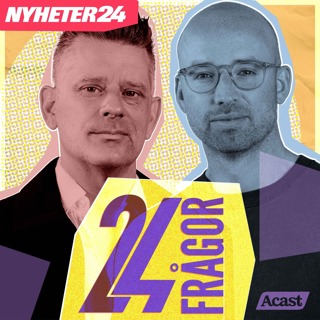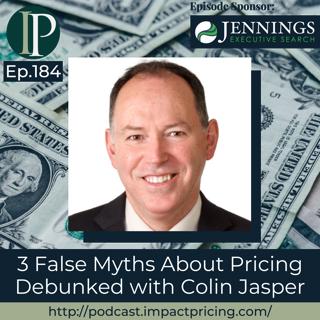
3 False Myths About Pricing Debunked with Colin Jasper
Colin Jasper has a Bachelor of Science in Statistics. He's been in consulting since 1997 and is currently a Principal at Positive Pricing in Melbourne, Australia. Colin is a competitive bridge player, and was a speaker at the Professional Pricing Society (PPS) this year. In this episode, Colin debunks three pricing myths and explains why these are the complete opposite of what people should be doing in pricing. Why you have to check out today’s podcast: Discover three common myths people practice when doing pricing Understand why these false myths and are the complete opposites of what people should be doing in pricing Find out why we shouldn’t compete on price and not behave like a commodity “Let's not behave like a commodity. Let's avoid competing on price.” – Colin Jasper Topics Covered: 01:29 – How Colin got into pricing 02:31 – Creating huge impact on companies through pricing 03:31 – Billable hours in professional services firms: Perspectives of clients and firms 07:32 – Fixed $500/month vs. hourly fee for bookkeeping 09:31 – Good, better, best in fixed fee vs. hourly + the ultimate purpose of hourly rates 13:02 – Dealing with the uncertainty of projects 14:37 – Competitor pricing as a pricing myth 16:17 – “Aspire to be the most expensive and not be scared of that” 18:04 – Myth: Losing on price means their pricing strategy is wrong 20:26 – Colin’s pricing advice 23:13 – Pricing table topics: “Value-based pricing is never perfect. You can't read your customers’ mind.” Key Takeaways: “From a client perspective, if a client doesn't want hourly rates, that's fine. They've got that. However, from a firm perspective, I think if the firm is going to be client-oriented, they should give the client the fee structure that they want.” – Colin Jasper “If your firm is going to put their interests ahead of yours, then you're probably working with the wrong firm in the first place. Because again, if the firm is putting their interests ahead of yours, they don't particularly care. I think the client ultimately chooses fee structure. It's our job to give them the fee structure they want, provided the fee level is high enough.” – Colin Jasper “Ultimately, when I come to what I think is we're trying to achieve with pricing, it’s coming up with a price that we regard as fair to the firm but is also fair to the client. And I think there are times where the best way to achieve that is through hourly rates.” – Colin Jasper “If you honestly aim to be the best firm in the market, your price has to send that message. You should aspire to be the most expensive and not be scared of that. You should own it.” – Colin Jasper “If you never lose work based on price, your pricing strategy is flawed. If you never lose work based on price, you're leaving money on the table.” – Colin Jasper People / Resources Mentioned: Positive Pricing: https://positivepricing.com/ Ron Baker: https://www.verasage.com/ronald-j-baker/ Connect with Colin Jasper: Website: https://positivepricing.com/ LinkedIn: https://www.linkedin.com/in/colin-jasper-7a401213/ Connect with Mark Stiving: LinkedIn: https://www.linkedin.com/in/stiving/ Email: mark@impactpricing.com
1 Aug 202226min

Blogcast #65: Adopt Price Segmentation
This is an Impact Pricing Blog published on June 22, 2022, turned into an audio podcast so you can listen on the go. Read Full Article Here: https://impactpricing.com/blog/adopt-price-segmentation/ If you have any feedback, definitely send it. You can reach us at mark@impactpricing.com. Now, go make an impact. Connect with Mark Stiving: Email: mark@impactpricing.com LinkedIn: https://www.linkedin.com/in/stiving/
30 Juli 20222min
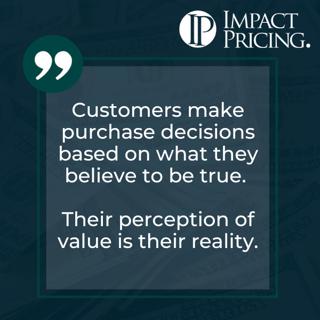
Memecast #68: Perception is Reality
I like to run the following thought experiment. Imagine that I'm auctioning off a coffee mug. Auction it off in a classroom, or a keynote room, and maybe I can get people to bid say $15 for my coffee mug. And then when I hand the coffee mug over, I intentionally pull out a $50 bill and show them, hey, this $50 bill was in the coffee mug. Well, why didn't I get paid for that? Because the buyers didn't know that it was there. Their perception was, it was a coffee mug. Now imagine I reach back and I grab a second coffee mug and I auction that one off. Now I might get $40. But what if there is an no $50 bill in this coffee mug? The real point, is that what our buyers believe has everything to do with their willingness to pay. It actually has nothing to do with what's true. Hopefully as marketers, as business people, we try to help clients believe the truth. But if we've built products that are better than our competitors, if we have $50 bills tucked into our coffee mugs and our buyers don't know it, we can't win the deals. We don't get paid for it. We hope you enjoyed this memecast. This impactful insight came from the book, Selling Value, which I wrote to help salespeople win more deals at higher prices. If you have any questions or feedback, please email me mark@impactpricing.com. Now go make an impact. Connect with Mark Stiving: Email: mark@impactpricing.com LinkedIn: https://www.linkedin.com/in/stiving/
27 Juli 20222min
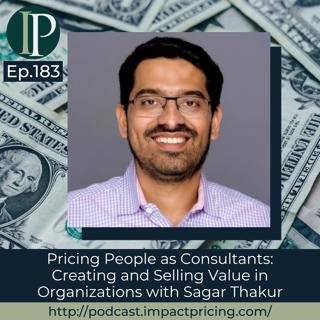
Pricing People as Consultants: Creating and Selling Value in Organizations with Sagar Thakur
Sagar Thakur is the Business Planning & Pricing Strategy guy at Outreach. He worked in SaaS Monetization Strategy at VMware, and he plays way too many instruments. In this episode, Sagar talks about the challenges and opportunities of a pricing role as he explains why costs don’t drive pricing. Why you have to check out today’s podcast: Discover the challenges and opportunities of being a pricing person, and why it’s challenging but beneficial to have pricing departments as internal consultants Find out what the three-step process is on how to tie value creation and value capture process together Understand why prices aren’t based on costs but on value/the customers’ willingness to pay “Don't start with pricing. Start with assessing value, quantifying it, understanding it, getting your handle on what value is with a specific feature or product, how it scales, how customers perceive it, where they start, where they end.” – Sagar Thakur Topics Covered: 01:07 – How Sagar got into pricing 02:28 – The SaaS monetization strategy work he did in VMware 03:48 – The tradeoff: Organizing product portfolio and applying different price metrics 06:42 – What Sagar thinks are the challenges and opportunities of a pricing job 13:11 – How do we build a pricing culture inside an organization? Is it really a pricing culture or is it a culture of value? 16:00 – Pricing departments as internal consultants 17:59 – Having the perception that price is based on costs 21:09 – Sagar’s pricing advice 21:57 – Pricing table topics game: “Costs don't drive pricing. Willingness to pay drives pricing.” Key Takeaways: “In general, simplicity is better until you can make sense, but then if the tradeoffs become too steep, now you need to add the complexity as a color from that perspective.” – Sagar Thakur “The ability to narrate a story or why is it that we're doing what we're doing and being able to support that, it's completely sort of a social / creative / engagement kind of job versus what most people think as an engineering sort of like analyze and say this is the perfect price. Dirty little secret in pricing is that there is no mathematically correct answer. It's a range of solutions which is possible.” – Sagar Thakur “It sort of starts from education, moves to empowering. You can come up with everything on your own. It has to be a collaborative process. And then it's the energized piece, which is like show the organization that this is helping so that we can further attach our pricing perspective to the growth plans of the company and how that helps.” – Sagar Thakur “I think rightfully so that pricing is a central piece to the puzzle of any company's sort of growth strategy, like how they do business and what not.” – Sagar Thakur People / Resources Mentioned: Outreach: https://www.outreach.io/ VMware: https://www.vmware.com/ Dharmesh Shah: https://www.linkedin.com/in/dharmesh/ Selling Value: https://www.amazon.com/Selling-Value-Deals-Higher-Prices/dp/1737655217 Connect with Sagar Thakur: LinkedIn: https://www.linkedin.com/in/sagar-thakur/ Connect with Mark Stiving: LinkedIn: https://www.linkedin.com/in/stiving/ Email: mark@impactpricing.com
25 Juli 202224min
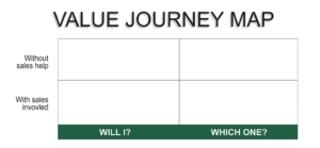
Blogcast #64: Buyer’s Value Journey Map
This is an Impact Pricing Blog published on June 15, 2022, turned into an audio podcast so you can listen on the go. Read Full Article Here: https://impactpricing.com/blog/buyers-value-journey-map/ If you have any feedback, definitely send it. You can reach us at mark@impactpricing.com. Now, go make an impact. Connect with Mark Stiving: Email: mark@impactpricing.com LinkedIn: https://www.linkedin.com/in/stiving/
22 Juli 20222min
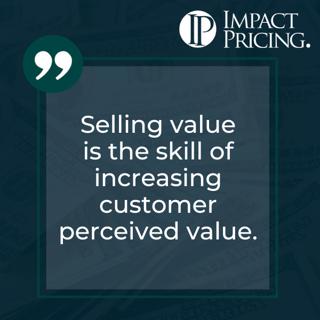
Memecast #67: Perceived Value
We all want our salespeople to sell more value. What does that actually mean though? If we think about it, our customers, whether they be consumers or businesses, they buy value. They exchange money for the value they perceive that they're going to get from our product, however they want to measure that value. Our job as a salesperson needs to be to make sure our customers, our buyers, understand how much value our product might be able to give them because the more value they perceive the more we can charge, the more likely we are to win the deal. Our job as a salesperson selling value then is to increase how much value our customers perceive from our products. We hope you enjoyed this memecast. This impactful insight came from the book, Selling Value, which I wrote to help salespeople win more deals at higher prices. If you have any questions or feedback, please email me mark@impactpricing.com. Now go make an impact. Connect with Mark Stiving: Email: mark@impactpricing.com LinkedIn: https://www.linkedin.com/in/stiving/
20 Juli 20221min

Grants, Scholarships, and Loans as Huge Factors of Pricing in Higher Education with Christine Carragee
Christine Carragee has been working as Carragee Consulting’s Business Consultant for more than six years now. She's done two different stints at the Vendavo – first as their Senior Pricing Consultant then as a Principal Consultant – so she certainly understands pricing. Christine was a Senior Pricing Analyst at Capella University. She lived on three continents before she was four years old. In this episode, Christine explains why it’s a must that you consider the segmentation of individuals when doing pricing in higher ed as she shares her pricing journey with Capella University. Why you have to check out today’s podcast: Find out how Capella University sets their price to students; Discover how financial aids such as scholarships and loans help you create good quality for the university; and Understand why it’s a must that think about the segmentation of individuals when doing pricing in higher ed “A huge portion of higher ed pricing is through the grants and scholarships and loans. And so, what you're initially paying at the time that you're doing your coursework is very different from what the total cost of a program is for you.” – Christine Carragee Topics Covered: 01:47 – How Christine got into pricing 03:02 – Learning about airlines from her roommate and the book Hard Landing 05:01 – Trying to put economic value to a university; Segmentation of individuals in higher ed pricing 08:48 – Capella University’s two tuition structures; Grants, scholarships, and loans in higher ed pricing 12:54 – What Mark loves about the way they do pricing in higher ed 14:48 – Looking at how competitors do pricing + accepting high achievers and issuing financial aid 17:04 – Christine’s pricing advice for the listeners 18:15 – Table topics: “Pricing champions drive pricing change” Key Takeaways: “There's a huge portion of pricing in higher ed that you have to think about the segmentation of the individuals, where they are in their life and then what their personal and professional goals are. There's a big pressure on colleges and universities to provide educations that have a financial ROI. But if you think about the history of university, especially in the U.S., many, many of the universities started as seminary schools or they started as state institutions with land grants, and they were more about having an educated population for a general purpose, involvement in society, and they were not the career track programs that we think of them as today.” – Christine Carragee “You can admit people who couldn't afford to come but have very high grades and have those personal statistics that make your institution look better on average by issuing financial aid.” – Christine Carragee “That's a self-reinforcing cycle, where once you become established or you have a reputation around having very good quality students, then it's going to attract more people who want to go to school with high achievers.” – Christine Carragee People / Resources Mentioned: Vendavo:https://www.vendavo.com/ Hard Landing book:https://www.amazon.com/Hard-Landing-Contest-Profits-Airlines/dp/0812928350 Connect with Christine Carragee: LinkedIn:https://www.linkedin.com/in/christine-carragee-83642b226/ Connect with Mark Stiving: LinkedIn:https://www.linkedin.com/in/stiving/ Email: mark@impactpricing.com
18 Juli 202221min

Blogcast #63: To Fee or Not to Fee?
This is an Impact Pricing Blog published on June 8, 2022, turned into an audio podcast so you can listen on the go. Read Full Article Here: https://impactpricing.com/blog/to-fee-or-not-to-fee/ If you have any feedback, definitely send it. You can reach us at mark@impactpricing.com. Now, go make an impact. Connect with Mark Stiving: Email: mark@impactpricing.com LinkedIn: https://www.linkedin.com/in/stiving/
15 Juli 20223min














